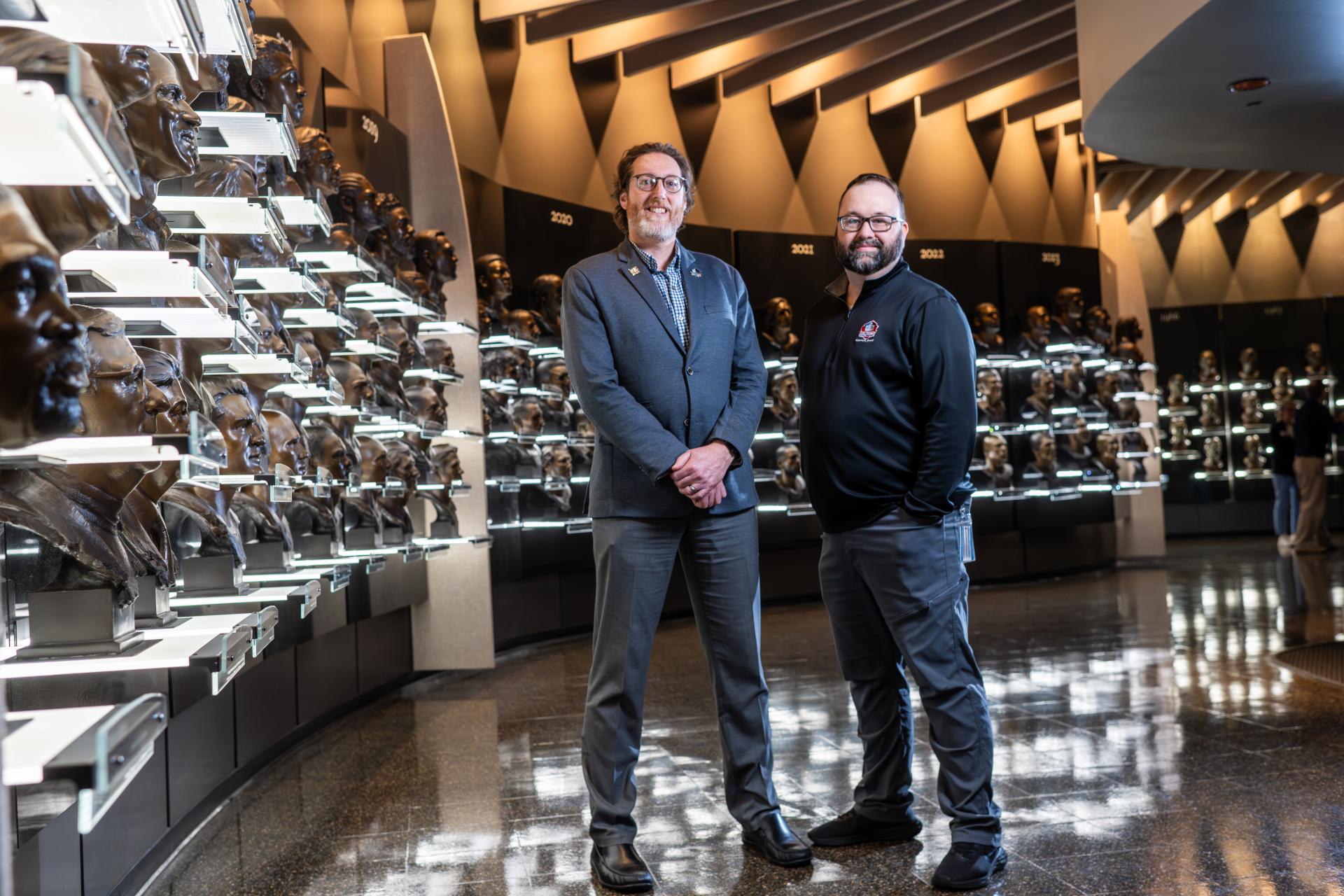Walking through the Pro Football Hall of Fame in Canton, Ohio, there is a sense of excitement in the air. Whether it’s the desire to see artifacts and exhibits about your favorite football stars and teams or from the groups of kids walking around on field trips, decked out in jerseys, it’s a different environment than the average museum. But there’s a certain time of year when the excitement is even higher and the behind-the-scenes work becomes more stressful, and that’s the lead-up to the annual enshrinement of new members into the Hall of Fame.
That’s where we find Jon Kendle and Ben Ankrum, behind a curtain in a cordoned-off area, prepping for the new exhibit that shows off the 2025 class of new Hall of Famers – including fellow Kent State alumnus, Antonio Gates.
Both Kendle and Ankrum are graduates of Kent State University’s Master of Library Information Science program. Kendle earned both his bachelor’s and master’s degrees from Kent State, in 2004 and 2014, respectively. Ankrum earned his Master of Library Information Science from Kent State in 2019.
The Makings of an Exhibit
“It starts as soon as we announce the class,” Kendle said, who serves as vice president of archives and exhibits of the Pro Football Hall of Fame. “I work a lot with the selection process as well. Working with our archive team, we're pulling information from the archives and disseminating that to our selectors so that they know how many All-Pros Antonio Gates was selected to and how many different awards Antonio Gates won throughout his career and his statistics.”
The Hall of Fame itself doesn’t pick the class; there is a selection committee made up of members of the media from each city that has an NFL team. This information from the archives helps the committee as they’re making their decisions, Kendle added. The archive team helps to provide information on the background of players throughout the process, which gives Kendle a good idea of who might end up in the class. This helps Kendle think through preparations.
The class is announced each year at the Super Bowl, and that is where Kendle can get to work right away.
“I fly out to the Super Bowl City. That's the first time we really get to meet the class together. And at that very moment when they're doing their press conferences, I'm pulling each one aside and introducing myself, starting to get them to think about their class exhibit and some of the artifacts that might help tell their story, learning a little bit more about them as well,” Kendle said.
The next step, Kendle said, is what he calls “Sizing Saturday,” when he sits with each class member as they get measured for their bronze bust.
“And once again, I reintroduce myself and start to have that conversation again about what we want to do with their exhibit and their artifacts, talk to them a little bit about what we might already have in the archive related to their career,” Kendle said.
“I start to formulate from what I gathered from their history; I start to craft the narrative of what we think we want to tell in the museum. Then they come for a walkthrough, a site visit to Canton. That usually happens in March. And so, then I really get to spend time with them in the archives. I get to tour them around the museum. They get to see where their bronze bust is going to be. They get to see last year's class exhibit,” Kendle said.
From there, the player can see what other people have included in their exhibits, and it usually gives them some ideas on how they want to tell their story. He stays in constant communication going back and forth about specific items and answering questions as the archivists put together the exhibit.
“Then we start writing the captions and laying out how we want to display it, and the fruits of that labor will be coming to fruition when we unveil the class exhibit,” Kendle said.
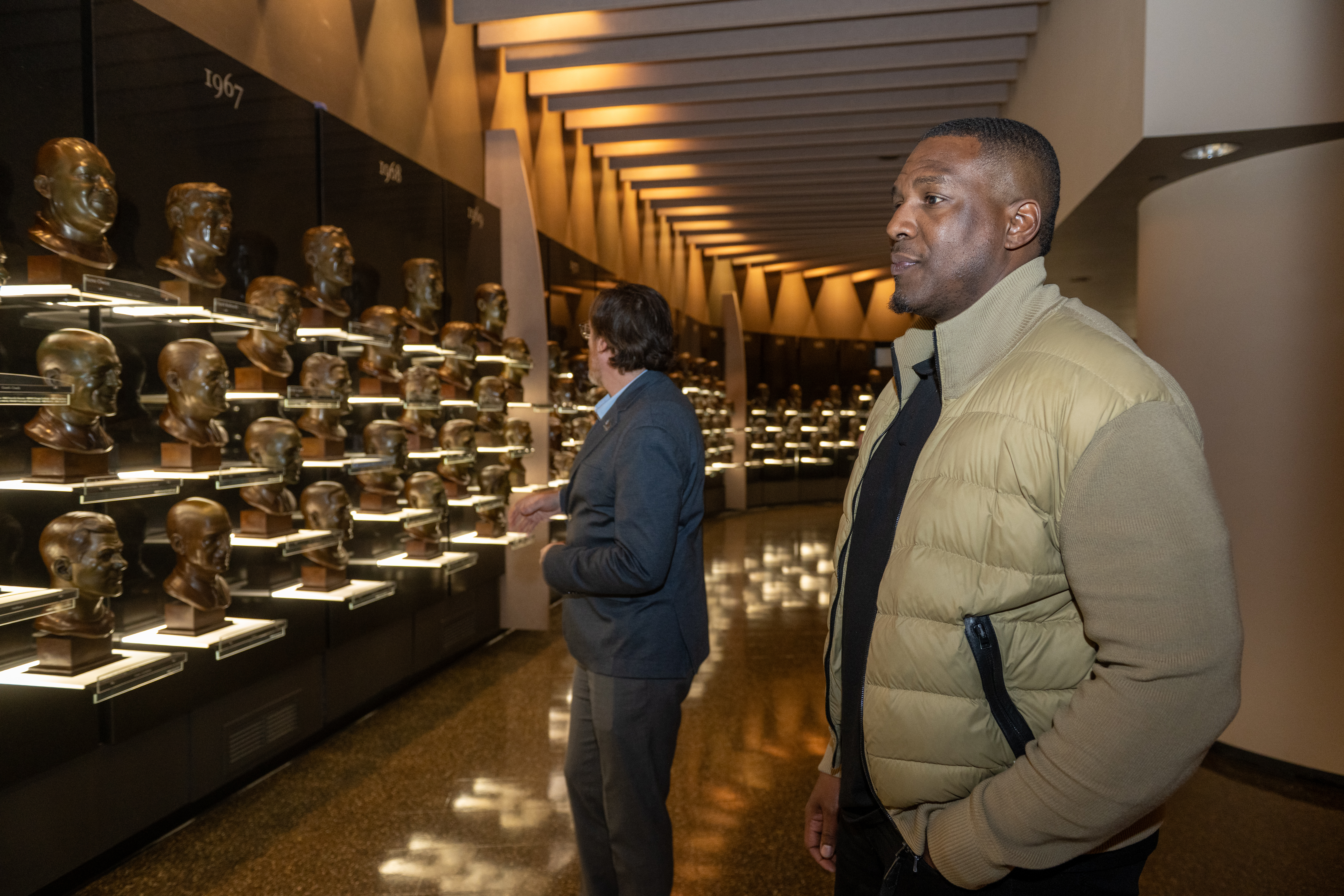
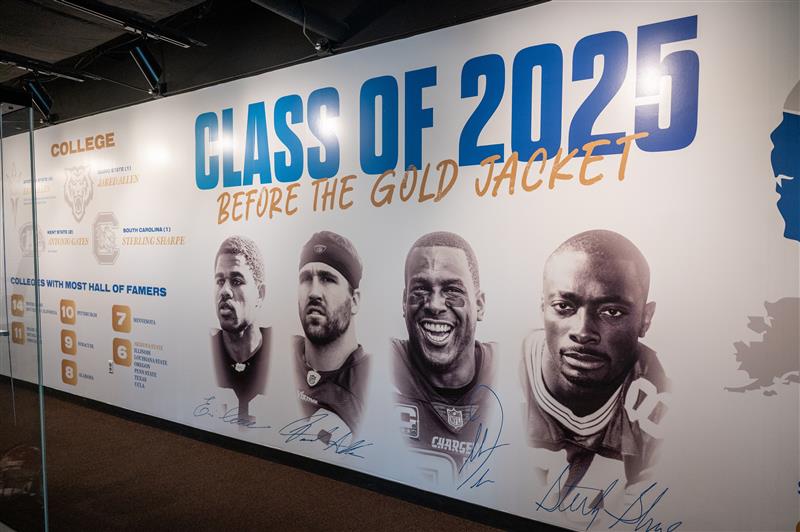
Ankrum, curator of exhibits at the Hall of Fame, then thinks about how best to display the different artifacts they have for each player.
He explains that exhibits are large, square glass cases, and he’s found it works best if the artifacts are displayed in two tiers. But people will be able to walk completely around the cases.
“When I think of it like that, then I try to envision how – if it's going to be 360 degrees – I want something to be interesting on all sides. I usually start off with something large that I can stick in the middle,” Ankrum explained.
“When someone walks in, that's going to be the first thing that draws their eye. The caption will be on one side, below it, and then any smaller ancillary objects. And usually, I try not to go too heavy. [I] want the objects to be able to breathe and speak for themselves,” Ankrum said.
Jon Kendle“My vision for the class exhibit, and specifically Antonio Gates, is to really shine light on the stories that make up these Pro Football Hall-of-Famers. It's not just the stats that they produced on the football field, but each and every one of them has a story to tell about their journey.”
Making the Gates Exhibit
When it came to putting together this year’s class exhibit, Kendle and Ankrum got to pull from Gates’ Kent State history.
“It's a very unique story in the sense that he's the only Pro Football Hall of Famer that didn't play college football,” Kendle said. He explained that Gates found his niche trying out for the San Diego Chargers and being an undrafted free agent.
“The stories that he tells, were that even in his 10th or 11th year, his mindset didn't change. His mindset was always, ‘Let me get to training camp. Let me every day be the best Antonio Gates that I can be. I just want to make the football team.’”
Kendle stresses that this mindset Gates possessed as an undrafted free agent followed him throughout his career. He didn’t have grand visions of setting the all-time NFL mark for touchdowns by a tight end, or to become a Pro Football Hall of Famer. He just wanted to make the football team, Kendle said.
“Every year he approached it that way: ‘I want to go do the best I can in training. Make the football team and then figure it out from there.’ And you keep stacking those days on top of each other. You keep stacking those seasons on top of each other and all of a sudden you retire, and you look back and go, ‘Oh my gosh, I accomplished a lot in this process.’ And so that's the story that I wanted to portray in this exhibit,” Kendle said.
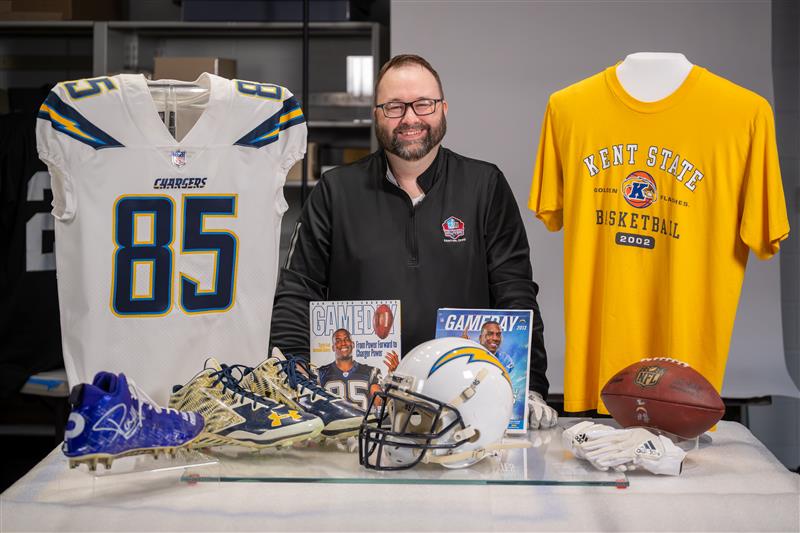
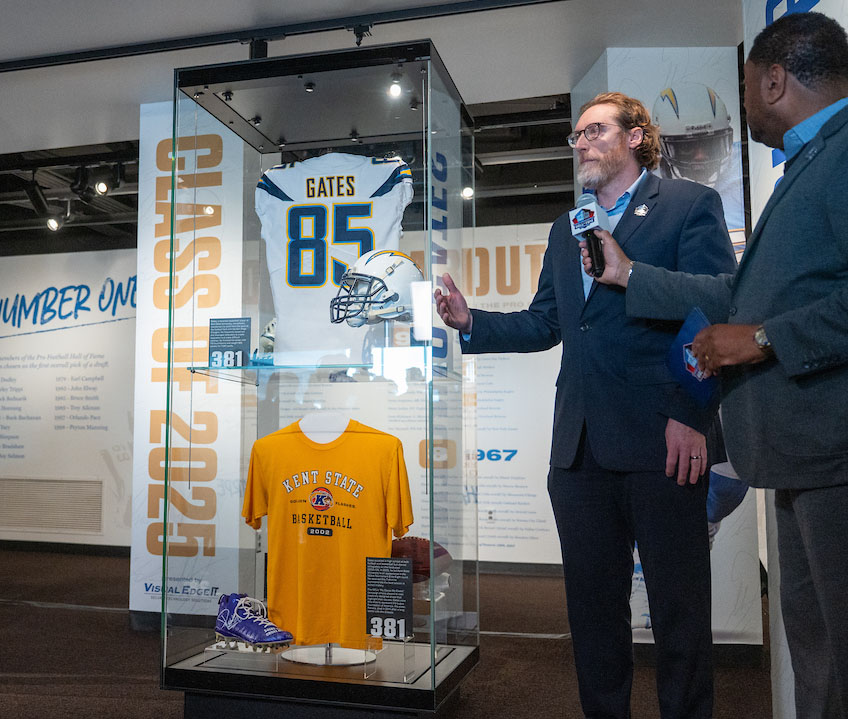
The artifacts that Gates sent in for his exhibit helped to tell his story, including cleats he wore for My Cause, My Cleats to showcase his sister who had passed away from Lupus in 2014. The other was a Kent State T-shirt he got for playing with the Kent State men’s basketball team in the Elite Eight NCAA tournament in 2002.
“I think for him that was such a pivotal time and a pivotal moment in his career trajectory, and really for us, helps tell that story that Antonio is the only Pro Football Hall of Famer who never played a snap of college football. He was a basketball player, a basketball star, and really led that Kent State team, and now he's enshrined in the Pro Football Hall of Fame,” Kendle said.
Antonio Gates"To Kent State University, Kent State I want to thank you from the bottom of my heart," Gates said. "Kent State is where I learned how to take my raw talent and turn it into much more. Kent is also where I learned how to lead and represent something bigger than myself."
Antonio Gates Inducted Into Pro Football Hall of Fame
Kent State University alumnus Antonio Gates was officially enshrined in the Pro Football Hall of Fame on Aug. 2, delivering an emotional speech that highlighted his transformative years as a Golden Flash and thanked the coaches who helped launch his improbable journey from college basketball to NFL stardom.
Read More »The Making of an Archivist
Kendle started out as an education major, but by the end of his freshman year had decided he was more interested in studying history than in studying how to teach history. He switched majors and then senior year landed an internship at the Pro Football Hall of Fame in the education department.
“I spent a lot of time touring school groups around the museum and talking about the history of pro football. And that's kind of where my love for the museum started,” Kendle said.
After he graduated with his history degree and a minor in English, Kendle landed a full-time job at the Hall of Fame and after a few years, a position in the research department opened. He got the job as a researcher and that’s when he really started to get to work with the collection.
“I started digging into the files, doing research, writing a lot, and it became very apparent that our two-dimensional collection needed a lot of organization, needed a lot of rehousing to help preserve that collection,” Kendle said. "To do that, I started to look into programs to help me learn that skill. And it just so happened that Kent State has one of the best library and information science programs in the country, and that's right in our backyard.”
It appealed to Kendle that the program was local, well-known and also online.

“I was excited, being a young father at the time, to be able to get a degree where the majority was online. I was able to really connect with my professors on a different level. I had a different mindset going in. At that point, I was a little bit older, so it was very different than my undergrad. But really it was about the fact that Kent State had not just a quality program, but one of the best MLIS programs in the country,” he said.
While he was pursuing his graduate degree, he continued to work at the museum and was able to utilize the new knowledge he was learning in school directly to his job.
“That passion just really grew as I learned more and more about organizing a collection and rehousing and preserving that collection,” Kendle said.
When he graduated, he was promoted to archivist and maintained and oversaw the organization and expansion of the Ralph Wilson Junior Pro Football Research and Preservation Center, which is the 2D archive portion of the museum’s collection. Then about four years ago, he was elevated to oversee the entire collection, including the collection on exhibit at the Hall of Fame and at other museums throughout the country.
The Makings of a Curator
Ankrum knew when he was younger that he wanted to go into this kind of work. “I always wanted to work in museums as a kid, and in fact, in high school I had to write a paper on a job that I would want, and I chose curator,” Ankrum said.
He was convinced it would take too much time in school to be able to chase his dream. He was a nontraditional student and didn’t end up finding his path until later. But he ended up with a degree in museum studies from Walsh University and quickly realized he needed a graduate degree to compete for the jobs that interested him. That’s when he found the Master of Library and Information Science program, which fit with his work schedule at the time.
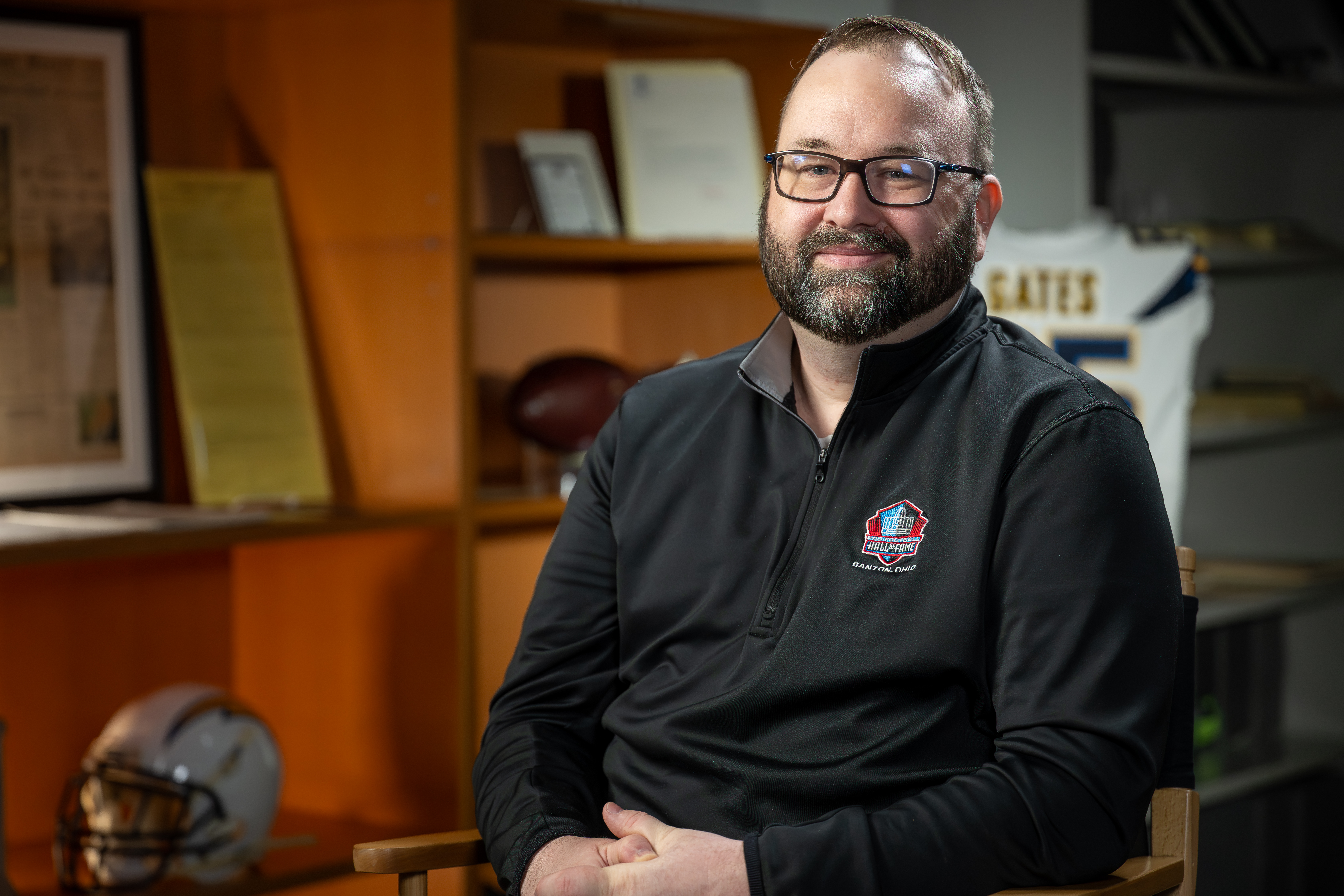
The Organization of Information
Kendle acknowledges that the name of the degree might confuse people.
“With a Master of Library and Information Science, it is a little confusing. I don't think a lot of people quite understand what you can do with that type of degree,” Kendle said. "As I went through my coursework, I realized that it's about organization, it's about preservation, and it really teaches you how to take the information that you're organizing and be able to communicate that out to the rest of your guests or your visitors, the rest of the world.”
“I've used so many skills just going through databases, how best to search through things to find the information that I need. I learned a lot of those skills through the MLIS program,” Ankrum said.
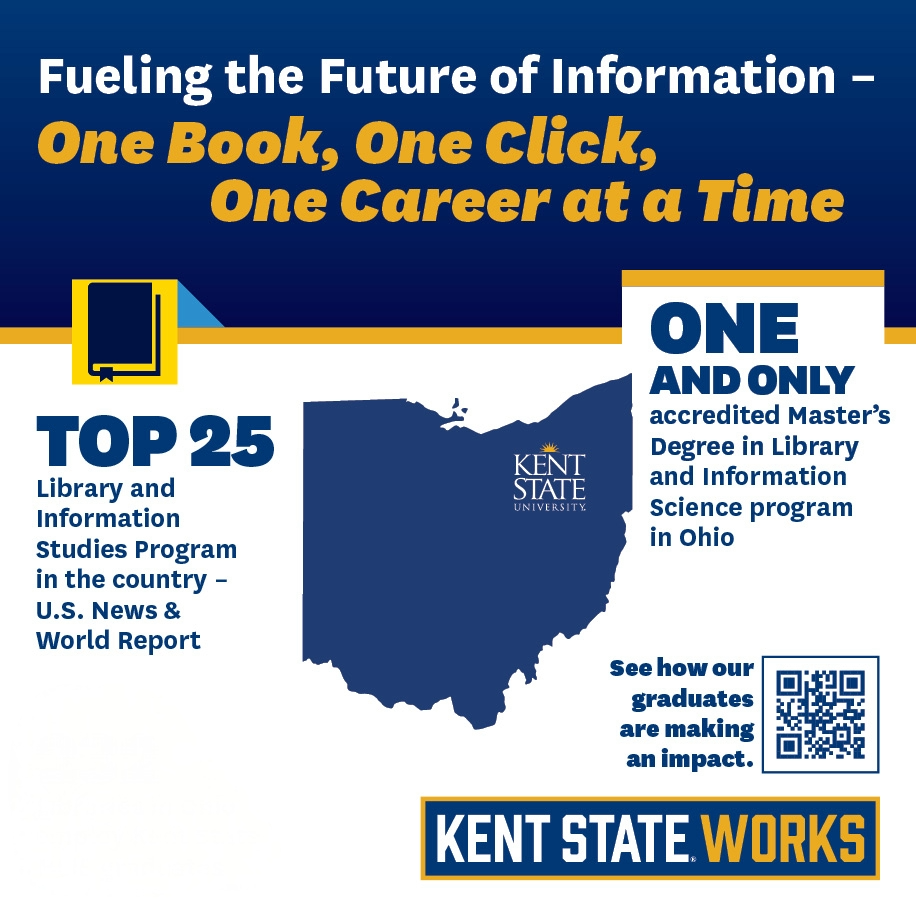
Ankrum has found that the database work he learned in his program has helped him in his day-to-day work now at the Hall of Fame.
“Even just the basic library and information science course. That's really helped a lot. Our database has over 40,000 objects in it, so trying to find what you're actually looking for can be daunting. And then you also learn why it's daunting. You think, ‘Well, we need to overhaul these things so that we can find all the information that we need easier.’ And that's really helped me as far as how we enter the information as well as finding it when I need it,” Ankrum said.
There are many different opportunities for students interested in the field. He mentions that outside of libraries and museums, big corporations like Coca-Cola have so much information that needs to be preserved.
“Those are skills that really translate to a lot of different jobs throughout the country and throughout the world,” Kendle stressed.
One aspect of his time at Kent State that Kendle looks back on fondly was the relationships, one-on-one advice and responses he got from so many of his professors. Especially going through his graduate program while working, he was able to go to his professors with real-world questions about issues he was having at work and get feedback.
"A lot of times you're not sure how online courses are going to go. And the majority of my courses were not face-to-face, but all those professors were always willing to pour into me and answer my questions. And I really appreciate that,” Kendle said.
Jon Kendle“I grew up born and raised in Canton, Ohio, in the shadows of the Pro Football Hall of Fame thinking, ‘Who the heck ever gets a job there?’”
Being a Part of Living History
Reflecting on his job, it’s hard for Kendle to name his favorite part. He said ultimately, it’s that every day is unique.
“One day it might be researching and diving into the collection to find information about a photograph that we have or rehousing a box and stumbling across the letter from 1976 that Bill Belichick wrote as an administrative assistant with the Detroit Lions. Some days it's more glamorous when I am sitting down with the NFL Network to do an interview to talk about the history of pro football,” Kendle said.
“Other days it's doing a grand unveiling of an exhibit that we created and that we've worked with a variety of different departments within the museum to facilitate. We get to talk and interact with Pro Football Hall of Famers who are the best of the best of what they did on the football field, whether it be coaching, playing or contributing. All of those things make my job so unique and one of a kind in this world, and I don't ever take that for granted.”
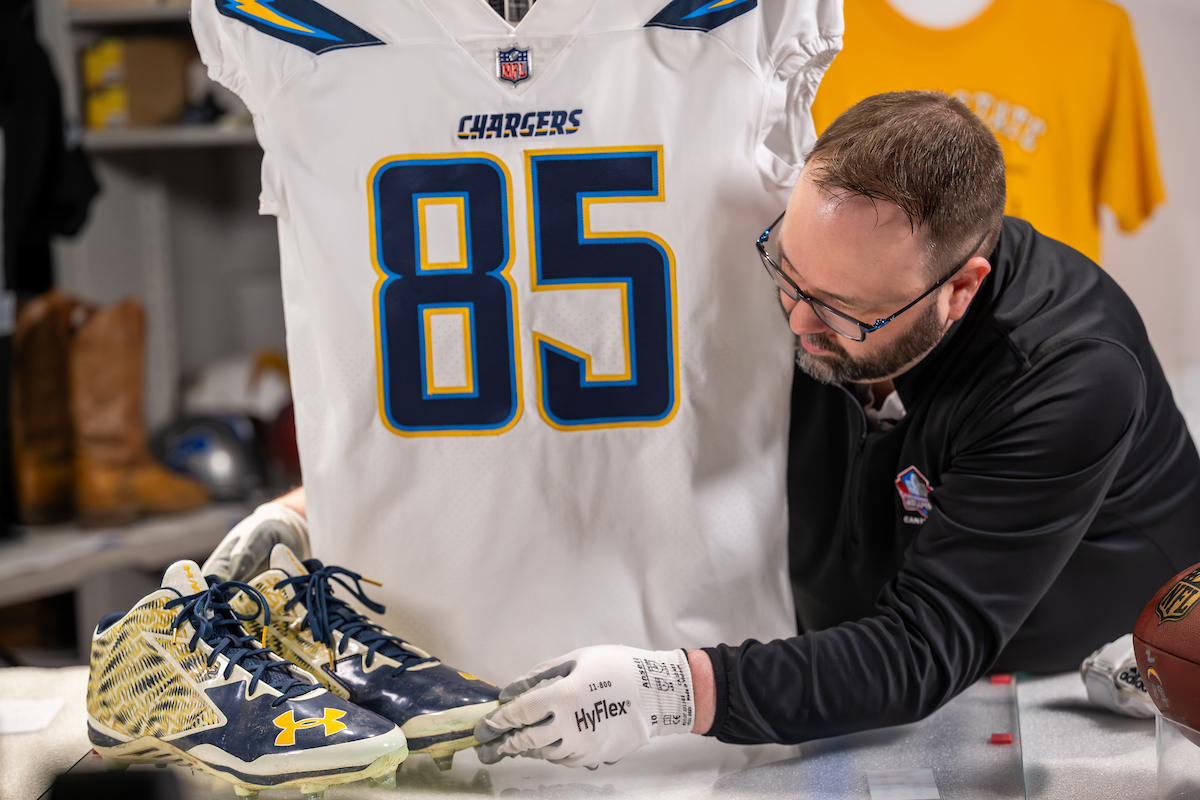
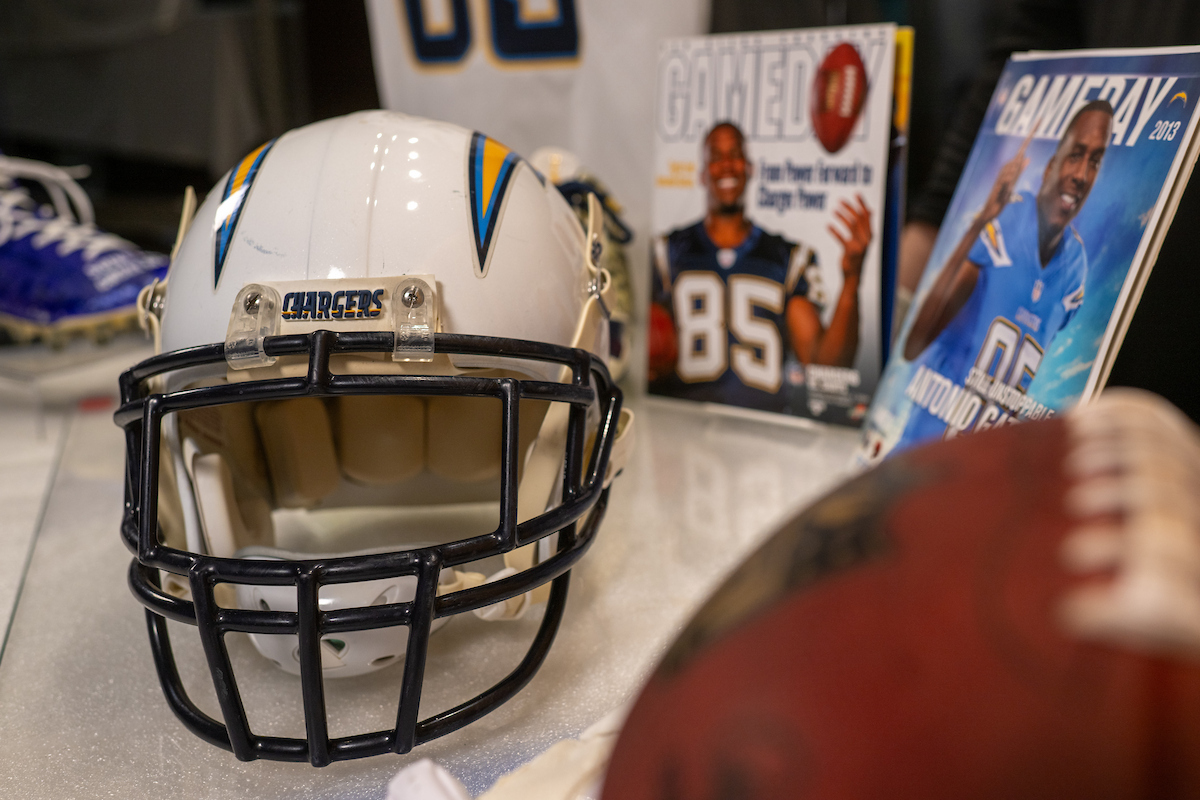
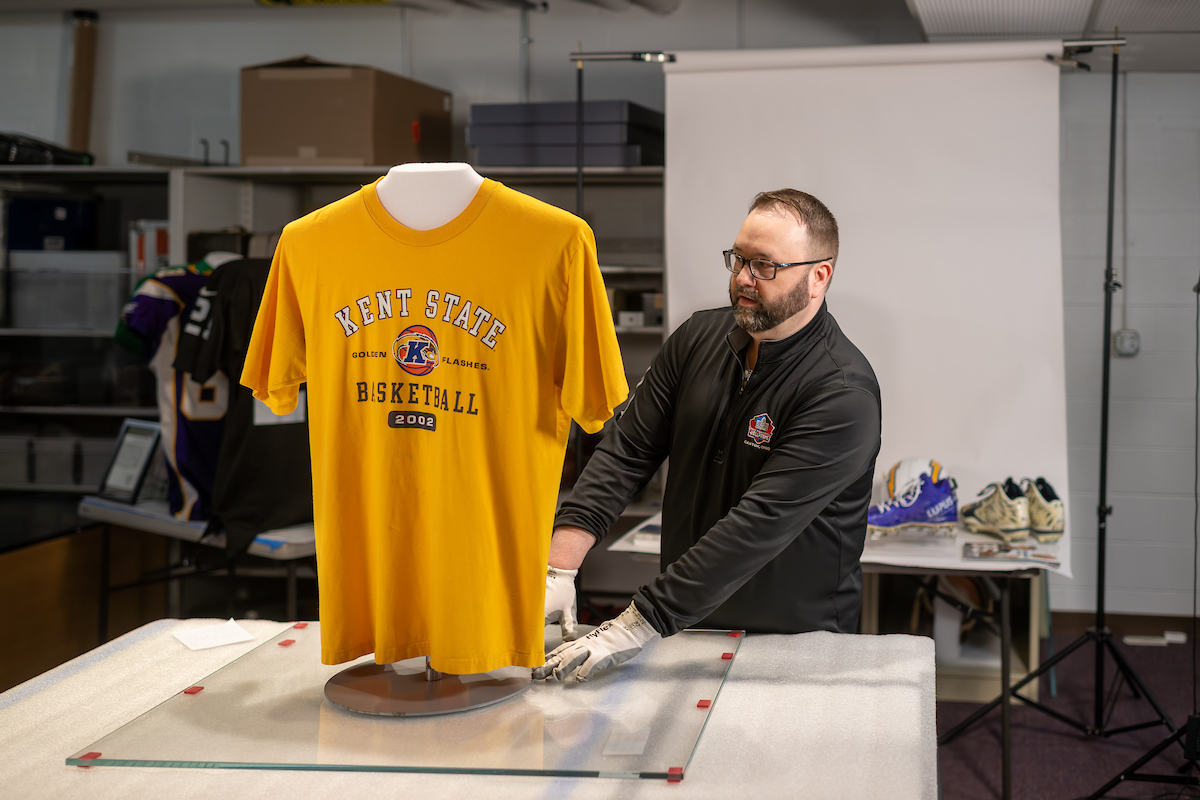
For Ankrum, it’s the evolving nature of the Hall of Fame that keeps things interesting in his work.
“It's a living museum because records break all the time. We're always getting new artifacts, new objects, and because of that, if I just worked in a regular history museum, maybe something interesting would come in every once in a while. Whereas here, I feel like we constantly get updates. We can always do something new. I always get new objects. And being able to work with the teams themselves to get things that are from a game that happened two weeks ago. I'm sticking it up on the exhibit. That to me is the most interesting; working in a museum where everything is living history,” Ankrum said.
Both Akrum and Kendle stress that football is more than just a game.
“Some people say, ‘Oh, it's just football.’ But it's really kind of oozed into our culture as Americans. Even if you don't like football, the team from your city or the closest team to your city becomes representative of the people that live there. It's really interesting to see how our objects can talk about culturally significant historic times and places,” Ankrum said.
Kendle sees parallels between football and society in general.
“While football is just a game played on a field, I do think it teaches so many life lessons. You look at the huddle on a football field, and there are so many different races and religions and economic backgrounds in that huddle. They're all there for one reason, and that's to help their team win a football game,” Kendle said.
“And I think that America and the world could use a little bit of that right now, that your differences in the huddle are what make you unique and special, and they allow you to be successful.”
